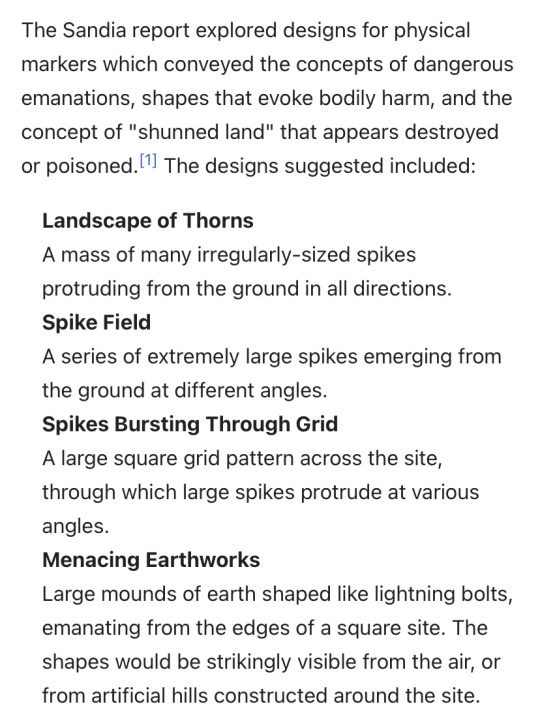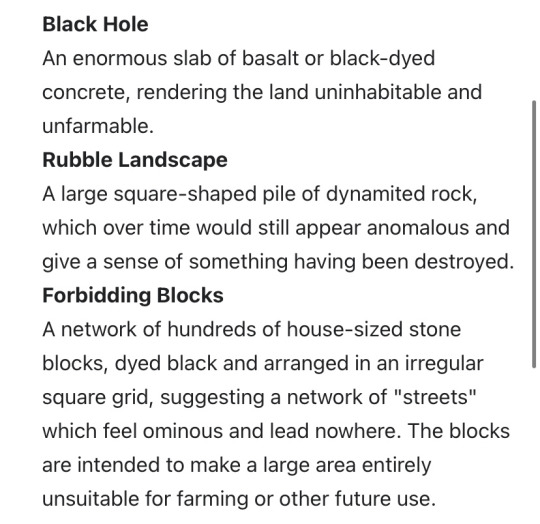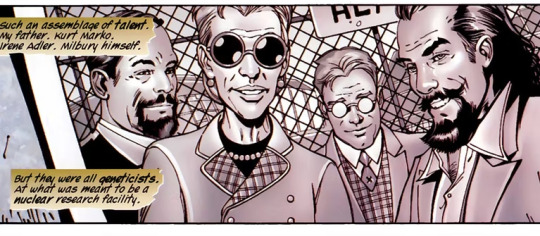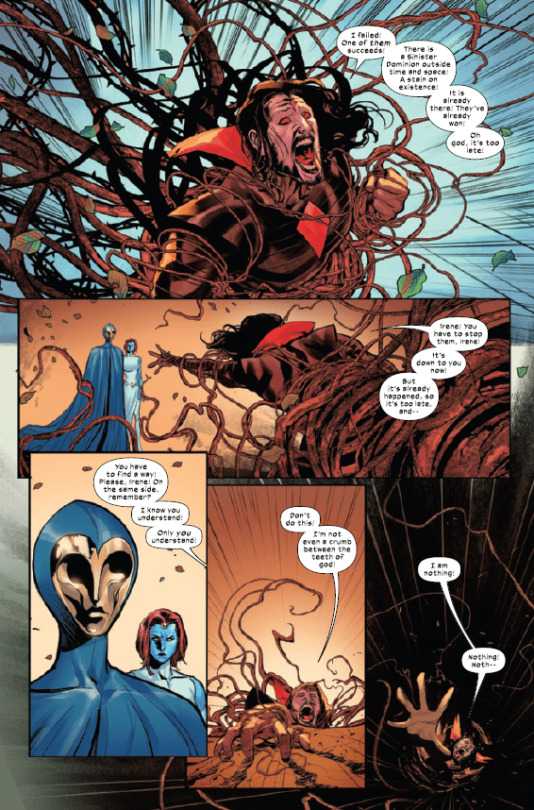#Nuclear radiation
Explore tagged Tumblr posts
Text
Wild boars in southeastern Germany are known to contain high levels of radioactive cesium, which has been widely attributed to the 1986 Chernobyl disaster. But radioactivity levels have decreased in other animals while mysteriously persisting in the boars – a peculiar behavior known as the "wild boar paradox". New research shows nuclear weapons tests from the mid-20th century are also responsible, and scientists say both sources continue to contaminate the boars via their diet. The stockily built, tusked wild boars (Sus scrofa) appear healthy, but the dangerously high levels of radioactive cesium found in some of them have reduced hunting of the animals for their meat and contributed to overpopulation issues.
Continue Reading.
793 notes
·
View notes
Text

#meme#nuclear radiation#radiation#nuclear#radiation warning#stamp#stamps#deviantart stamps#da stamps#deviantart stamp#page graphics#web resources#webcore#not a request.rar#made it raw as hell but possibly hard to read
57 notes
·
View notes
Text
Legalize Nuclear Bombs 😝😝❗❗❗❗❗

#total drama#td fanart#td shawn#nuclear radiation#Made an Apocalypse AU w/ my friend dont ask <3#Love torturing my favourites#this isnt a repost what are you talking about
57 notes
·
View notes
Text
had a conversation with my best friend/loml about orphan sources which are like. sources of radiation that are kinda just,,, left there and forgotten about and then found later?
and how we both agree that we do not think we could resist for one reason or another, and that we should keep each other accountable in case we come across one of these in town because neither of us can trust ourselves to avoid it
anyway my friend concluded that we may not have horse girl energy per SE but we do really just act like we are in a fan fiction? and they told to post on Tumblr bc "my niche follower community would get it" so what do you think:
"troy and abed find an orphan source / angst / major character death / community /hurt/comfort / dead dove don't eat" is this anything
#community#community tv show#community nbc#abed nadir#community tv#nbc community#troy barnes#orphan source#radiation#nuclear#nuclear radiation#harperposting
17 notes
·
View notes
Text

17 notes
·
View notes
Text
tag yourself as long-term nuclear waste warning markers!


#nuclear#nuclear history#nuclear radiation#personally i��d be menacing earthworks#which as a name goes incredibly hard#ath0lbr0se
12 notes
·
View notes
Text
My Favorite Books on Nuclear / Radiation Topics
Throughout posting, I have discussed different sources to learn more about my favorite, complicated, topic. But I also love to encourage people to read. I have 31 books surrounding these subjects; some I have read and some I have not. But from this pile, I want to give you guys my top 5.
5. The original IAEA report on Chernobyl: Admittedly, I have not finished this one yet, mainly because I want to give it my full, undivided attention. This 150+ page document cannot be found on the IAEA website, I had to do some digging to actually find it. Essentially, it is the governing body of nuclear sciences buying the Soviet propaganda hook, line, and sinker. If you can find it, give it a once over. But I have no idea where it is ;)
4. Command and Control by Eric Schlosser: Not a quick read by any means. However, I found it interesting. Broken Arrow Incidents are when the United States loses an atomic bomb. It has happened more than once. Talk about an orphan source…
3. Atomic Women by Roseanne Montillo: The role of women within the history of nuclear science cannot be overstated. Starting with Marie Curie, this story recounts the women who worked within studies for radioactive material, as well as the Manhattan Project.
2. Hiroshima by John Hersey: This book is incredible. It is so well-known for a reason. Packed within this small book are some of the most harrowing descriptions of the results of the atomic bomb. I could not put it down.
1. Midnight in Chernobyl by Adam Higginbotham: The pinnacle of literature. I remember laying in bed, reading as Higginbotham recounted the harrowing final minutes before the explosion. It was like I could feel it in my bones. This is definitely in my top 5 books of all time, so it comes as no surprise it is number 1 here. If you take anything from my blog, it should be to read this book.
#nuclear breakdown#nuclear science#nuclear radiation#nuclear#radioactivity#radiation#hiroshima#atomic bomb#atomic#atomic age#chernobyl#broken arrow#nuclear bomb#IAEA
53 notes
·
View notes
Note
Seems like the Atomic Age inspired every second superhero to get his or her powers through radiation. The radioactive spider bite is probably the most well known example, but I saw some pretty wacky ones. Wondering if you know any other crazy or interesting ones too?
A lot of the Silver Age superheroes were radioactive, in no small part because Stan Lee was a nut on the subject and didn't particularly care about the actual science. So in addition to Spider-Man (and many of his rogues' gallery), you have the gamma bomb test that created the Hulk and many of his rogues' gallery (although Al Ewing invented a fascinating Kabbalistic mythology on top of the whole gamma radiation thing), the radioactive ooze that blinded Matt Murdock (and created the Ninja Turtles), and on and on...

The one you're probably less familiar with is the first origin story for mutants in the X-Men:
While the nuclear origin of Professor X and the 05 were eventually superseded by Chris Claremont's decision to shift from atomic radiation to genetic mutation, which would be formalized as the X-Gene, X-comics didn't completely abandon the Silver Age origin story for mutants. Building on Xavier's backstory of being the children of government scientists working at a top-secret project at Alamagordo, New Mexico (a clear allusion to the Trinity Test conducted at Los Alamos as part of the Manhattan Project), Fabien Nicieza, Craig Kyle, Chris Yost, and especially Mike Carey invented the Black Womb Project.

In a feat of paranoid conspiracy rarely seen outside of a game of Illuminati, the Black Womb Project was a secret genetic mutation research group using nuclear research as a cover story. Led by "Dr. Nathan Milbury" (aka Mister Sinister aka Nathaniel Essex) and the almost-as-evil Amanda Mueller (aka "the Black Womb Killer"), the Black Womb Project hired Dr. Brian Xavier (Charles' father), Dr. Kurt Marko (Cain Marko's father), and Irene Adler (working undercover to foil Sinister's bid for Dominion).
This project involved wildly unethical experimentation on thousands of children abducted by FBI agents Fred Duncan (who would become Professor X's FBI liason) and Carl Denti (the future anti-mutant villain "X-Cutioner"), including many of the Silver Age villains like Fred Dukes (the Blob) and Mortimer Toynbee (Toad), as well as experiments conducted by Drs. Xavier and Marko on their own children Charles and Cain. Supposedly, the Black Womb Project was designed to test a number of different methods of activating latent X-Genes...
But secretly, Nathaniel Essex/Mister Sinister was intending to use the Project as a springboard for his goals for immortality and ultimate dominion through something called the Cronus Device. This involved the implantation of Sinister's DNA into Xavier and Marko so that if Sinister ever died, a failsafe would activate that would wipe the minds of Charles, Marko, and their descendants and implant Sinister's mind and abilities into them.
While Sinister's plans were foiled by Irene Adler's precognition and Amanda Mueller's attempt to usurp the Cronus Device and replace Sinister's backup with her own (Mueller's mutant power gave her immortality but not eternal youth, so she wanted to use Sinister's backdoor to clone herself into youthful bodies), it did succeed in installing a Sinister backdoor into Charles Xavier and Cain Marko that Sinister would eventually infiltrate into the mutant DNA database at the heart of Krakoan resurrection. Sinister then used his backdoors to attempt to seize control of the Quiet Council and create an intergalatic mutant empire, which he would then sacrifice to fuel his ascension into Dominion.

Unfortunately, he didn't know that Enigma had gotten there first...
#people's history of the marvel universe#comics#comics meta#marvel#marvel meta#xmen meta#nuclear radiation#stan lee#chris claremont#al ewing#black womb project#mutant metaphor#mister sinister#krakoa#hoxpox doxroxdeox foxfothoxrotpox#sins of sinister#fall of x#rotpox#kieron gillen#jonathan hickman
19 notes
·
View notes
Text
SCREW YOU AND ALL YOUR LIBERAL VIEWS!! THERES ONLY ONE GENDER


#THERES ONLY ONE GENDER#nuclear radiation#SORRY I MEAN NECUCLEAR GRADION#nO#NUCLEAR RADIATION IN CAPS
3 notes
·
View notes
Text

April 26, 1986
#eon posting#chernobyl#nuclear radiation#radiation safety#nuclear#nuclear power plant#nuclear disaster
5 notes
·
View notes
Photo

Atomic Mishap
Second verse, same as the first?
Source
Creator: DerpSpawn
#lego#bionicle#multiple models#nuclear#nuclear reactor#radiation#radioactive#nuclear radiation#reactor#suit#space suit#radiation suit#fire#green#green fire#glowing#bricks#Generator#power#power generation#failure#meltdown#reactor meltdown#engineer
17 notes
·
View notes
Text
In the spring of 1986, in their rush to flee the radioactive plume and booming fire that burned after the Chernobyl power plant exploded, many people left behind their dogs. Most of those former pets died as radiation ripped through the region and emergency workers culled the animals they feared would ferry toxic atoms about. Some, though, survived. Those dogs trekked into the camps of liquidators to beg for scraps; they nosed into empty buildings and found safe places to sleep. In the 1,600-square-mile exclusion zone around the power plant, they encountered each other, and began to reproduce. “Dogs were there immediately after the disaster,” says Gabriella Spatola, a geneticist at the National Institutes of Health and the University of South Carolina. And they have been there ever since.
Spatola and her colleagues are now puzzling through the genomes of those survivors’ modern descendants. In identifying the genetic scars that today’s animals may have inherited, the researchers hope to understand how, and how well, Chernobyl’s canine populations have thrived. The findings could both reveal the lasting tolls of radiation and hint at traits that have helped certain dogs avoid the disaster’s worst health effects. The fates of dogs—bred and adapted to work, play, and lounge at our side—are tied to ours. And the canines we leave behind when crises strike could show us what it takes to survive the fallout of our gravest mistakes.
One of the key canine groups the team is focusing on is based at what’s left of the power plant itself, and has likely weathered the highest levels of radiation of any dog population in the exclusion zone. The researchers are working to compare the genomes of those dogs with those of others living farther out, in Chernobyl City, a quasi-residential region about nine miles away that was evacuated after the blast, and in Slavutych, a less contaminated city roughly 30 miles out, where many power-plant workers settled after leaving their post.
The spatial differences are essential to the study’s success. The region’s landscape is “a patchwork of different radioactivity levels,” says Timothy Mousseau, a biologist at the University of South Carolina who’s been studying Chernobyl’s wildlife for more than 20 years, and is co-advising Spatola’s work. Which means that geographically distinct packs of dogs could, in theory, have distinct exposure histories, and distinct genetic legacies to show for it. The team’s work is just beginning. But in the hundreds of blood samples that Spatola and her colleagues have analyzed from dogs in all three groups, they’ve already found evidence that the reactor-adjacent canines are different in at least some ways.
The animals that the team sampled in Chernobyl City and Slavutych, the researchers found, look a lot like dogs you’d find elsewhere. They’ve been born of mixtures of modern breeds: mastiffs, pinschers, schnauzers, boxers, terriers. But the power-plant population seems more stuck in the past. The dogs there are far more inbred, and still skew heavily German shepherd—a breed that has a long history in the region, a hint that the animals have largely kept to their ancestral roots, says Elaine Ostrander, a geneticist at the National Institutes of Health and another of Spatola’s co-advisers. This pack might represent something like “a time capsule” from the disaster’s worst days, says Elinor Karlsson, a genomics expert at the Broad Institute of MIT and Harvard. Perhaps this lineage of dogs has been stewing in the plant’s radiation for a dozen generations or more. Some may even have inherited mutations caused by the explosion itself.
The long-ranging consequences of their exposures, though, aren’t yet clear. Repeated, heavy doses of radiation—which can mutate DNA, seed cancers, and irreparably damage the structural integrity of cells—can be, without question, “extremely detrimental to life,” says Isain Zapata, a biomedical researcher at Rocky Vista University. And over the decades, a wealth of studies has revealed serious health effects among some local animals: Birds have been found with tumors and unusually small brains; bank voles have battled cataracts and produced wonky, underperforming sperm. Even bees seem to struggle to reproduce. Still, not all creatures are equally susceptible to radiation; many have also avoided the region’s most saturated zones. And in some parts of the exclusion zone, some of them appear to be flourishing on terrain now largely devoid of humans and their polluting, disruptive ways. In this landscape of possibilities, it’s hard to say where the dogs of Chernobyl might fall: Domestic canines depend heavily on us, and may suffer more than other animals when we leave. But that dependence also means that dogs are also less likely to chow down on wild, radiation-contaminated food, and may be well positioned to take advantage of the ruins we leave behind—and to mooch more when we start to creep back.
What the team finds next will be telling. Scientists have already spent decades scrutinizing canine genomes; a reference book for what’s “typical” already exists, which makes detecting “when something’s unusual” much easier, Karlsson told me. The researchers might uncover mutations and sickness in the power-plant pack—a sign that the dogs’ genomes have been walloped by years of radiation, as those of some other animals apparently have. But Karlsson also thinks the team could find the opposite: hints of genetic traits that have kept the dogs alive under harsh conditions, such as a higher resistance to cancer. That, in turn, could bode well for us. Canine and human genomes are quite similar, and “domestic dogs have been a model for human cancer for a very long time,” says Shane Campbell-Staton, an evolutionary biologist at Princeton who studies Chernobyl’s wolves. Perhaps these dogs did not bend under pressure, but instead thrived.
One of the trickiest parts of the project will be figuring out which differences among the studied dog groups are attributable to radiation, rather than the ways in which the Chernobyl disaster completely remodeled the region and its ecosystems. Populations of plants, insects, birds, and mammals ebbed and flowed, affecting the availability of resources and the presence of predators. Humans came and left, sometimes bringing food, medical care, or more dogs. Generations of animals replaced each other, and populations mingled and mixed. Olena Burdo, a radioecologist at the Kiev Institute for Nuclear Research, has worked for years to try to parse these many variables in her work with bank voles. In the wild, it’s usually easy to tell that differences between populations exist, she told me. It’s just not always possible to pinpoint why.
Without perfect record-keeping of individual canines, the team can’t prove that the modern dogs they’re sampling are directly descended from 1980s dogs, either. Burdo told me she suspects that at least some of the power-plant dogs may be more transient than the researchers think. If the three dog populations under study are loose, amorphous, and constantly turning over, the researchers will have a tough time determining the effects of higher- or lower-dose radiation exposure through generations. The power-plant dogs—the purported high-radiation cohort—may not really be a lineage born of the facility’s buildings after all.
But Ostrander is fairly convinced that the power-plant population has largely kept to itself. Life among the abandoned buildings is actually quite plush. Workers toss the dogs leftovers; tourists cheerfully sneak them snacks. And in recent years, veterinarians have banded together to provide the dogs medical care, vaccinations, and spay-and-neuter services. Beyond that, the canines may not need much. The pack seems to have grown more aloof and self-sufficient over the years, Spatola told me, and may even be behaviorally reverting to some of its wilder, wolfish roots. Left to fend for themselves when the reactor blew, this population of dogs—which started out as pets—has been transformed, perhaps by radiation, perhaps by human fallibility, into something less familiar, more strange, and entirely its own.
#history#science#animals#zoology#genetics#nuclear energy#nuclear radiation#chernobyl disaster#ussr#ukraine#dogs
10 notes
·
View notes
Note
Hi, if you don't mind could I possibly request a otherkin flag for nuclear energy and radiation? Thank you
Eyestrain Tw
Here are your flags! Hope you enjoy


Otherhearted and Otherkin versions
9 notes
·
View notes
Text

#aesthetic#cyberpunk#grunge#pale#dark#radioactivity#glitch#alternative#indie#pale grunge#soft grunge#dark pale#nuclear radiation#nuclear#radiation#post apocalyptic#post apocalypse#post apoc#danger#elektrostantsiyapost#style#fashion#2014 grunge#radioactive#radioactive sign#my photo#my edit#goth
8 notes
·
View notes
Text
Hello!♡ Today I bring you this girl half melted by radiations cause I wanted an excuse to draw internal organs☢️
I love the shade of green given by the phenomenon of radioluminescence, the light obtained by bombarding an atom with ionizing radiation that is usually seen around nuclear reactors🧪

#radioactive#radiations#nuclear#nuclear energy#nuclear radiation#nuclear reactor#green aesthetic#dreamcore#weirdcore#liminalcore#acid pixie#liminal spaces#organs#gore#tw gore#art#drawing#photoshop#procreate#artists on tumblr#digital art#digital illustration#artist support#digital portrait#portrait#art portrait
15 notes
·
View notes
Text
Highly Radioactive Problem
A highly radioactive spill near the Columbia River in Hanford in eastern Washington is worse than was previously described. Hanford Site, or the Hanford Nuclear Reservation or Site W, is a nuclear production complex. It was part of the Manhattan Project, and produced the plutonium in more than 60,000 weapons in the U.S. nuclear arsenal, including Fat Man, the bomb dropped on Nagasaki in 1945.…

View On WordPress
#columbia river#department of energy#hanford#hanford nuclear reservation#manhattan project#nuclear energy#nuclear radiation#Washington State
2 notes
·
View notes